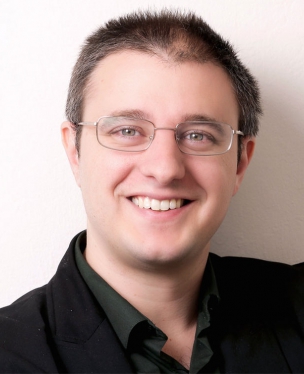09/06/2016

Barely a decade old, the access to energy market is attracting interest from a wide variety of businesses. A major player in the market, d.light has partnered with us since the earliest days of Awango by Total. The company designs and manufactures solar solutions that we distribute across Africa and Southeast Asia. d.light CEO Ned Tozun explains how they built their sustainable business model.
Why did you choose to work with Total and what has this partnership brought you?
Ned Tozun / In the 21st century, it just doesn’t make sense that there are still 1.3 billion people living without access to electricity. And the reality is that businesses were not taking this seriously. But Total was. At the time, back in 2011, Awango by Total was just getting off the ground. We started a pilot together in Cameroon in 20 service stations. Since then, Total has really helped us scale up — from selling 10,000 units to hundreds of thousands of units a month — and ensured that we systematically deliver sustainable quality. Now we’re working with Total in over 25 countries across Asia and Africa. It’s been a great partnership over the years.
What products do you sell through Awango by Total?
N. T. / We have a range of products, from an entry-level solar light that retails for around 10 US dollars and replaces kerosene lamps to a light that also charges a phone. In addition to that, we have an entire solar home system that provides multiple lights, can charge multiple phones and runs a radio. So we have a whole spectrum of products along what we think of as the energy access ladder.
Your market penetration is huge. What makes your products stand out from the rest?
N. T. / Our human-centered design approach. We spend a lot of time with our customers in the field, understanding their needs and how to make those trade-offs between features and price. It’s not like we're working at Apple and use the product ourselves. In this case, we’re designing for a segment of the population that has no access to power, and we really have to learn from them.
The other thing is our relentless focus on quality. Our customers rely on these products every single day. They use them in hot, dusty, humid environments. So we develop products that are extremely robust and can hold up in those environments. Total has made us better on this front as well.
How can you maintain that level of quality yet keep your prices down and be a social business?
N. T. / I spent four years in China trying to answer that question. How do we achieve high quality but still excellent value for the customers? That’s a difficult thing to do. Ultimately, what we’ve done to ensure that is to work very closely with all the partners in our supply chain, from solar panel manufacturers and battery manufacturers to LED manufacturers. We’re not trying to make the cheapest product, because cheap products won’t last very long. It’s poor value for money if the product breaks after a few weeks.
What are your growth prospects in the market?
N. T. / It’s an incredibly exciting time in our industry. Now, unlike 10 years ago, there’s a huge amount of momentum and interest in our space. People are realizing that off-grid solar products are going to leapfrog the electric grid just like mobile phones leapfrogged landlines. In Africa, very few people ended up having a landline phone connection. We think the same will happen with energy. Realistically, the grid is not going to be extended to all these rural areas in the foreseeable future. One of the areas of expansion for us is helping customers go up what we call the energy access ladder: going from a solar light to a basic solar home system, and then upwards from there to a device that can run a TV, a fan—the kind of appliances that we get to enjoy with a grid connection.



